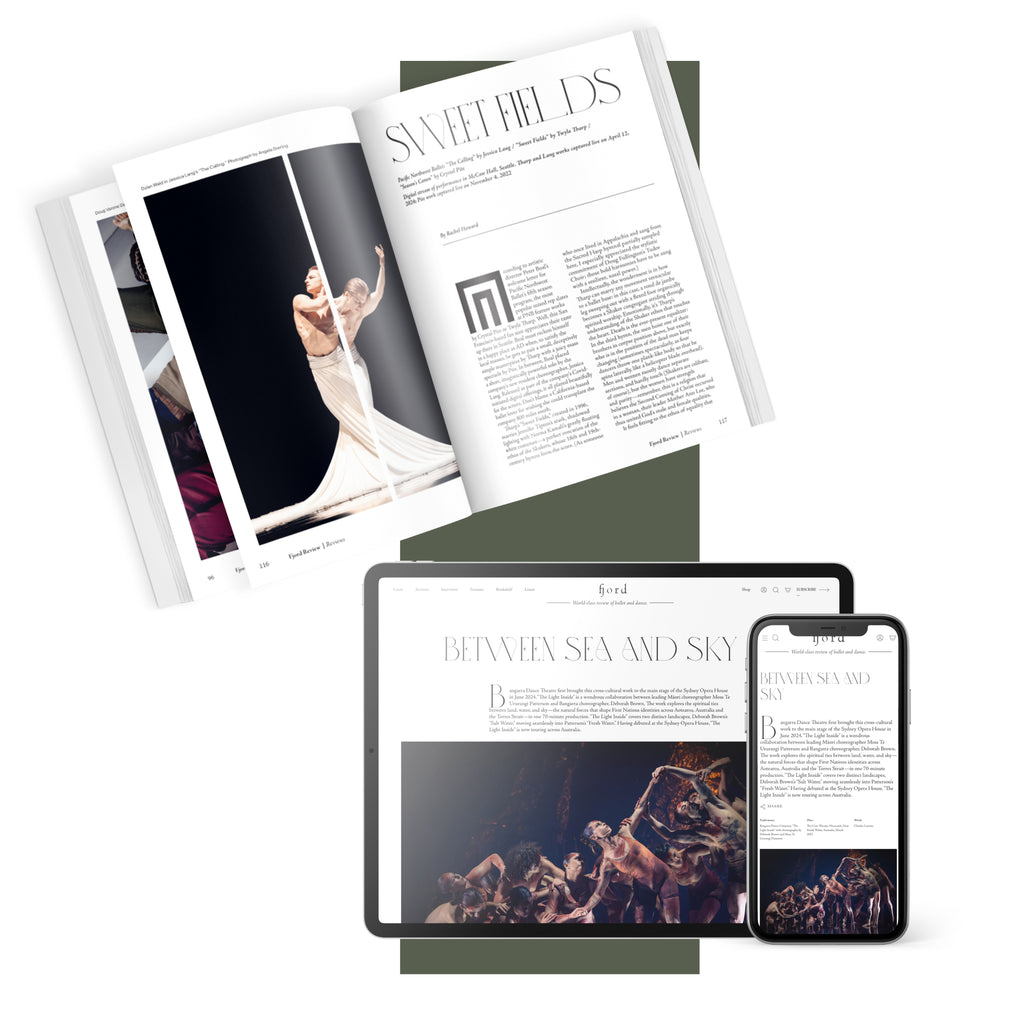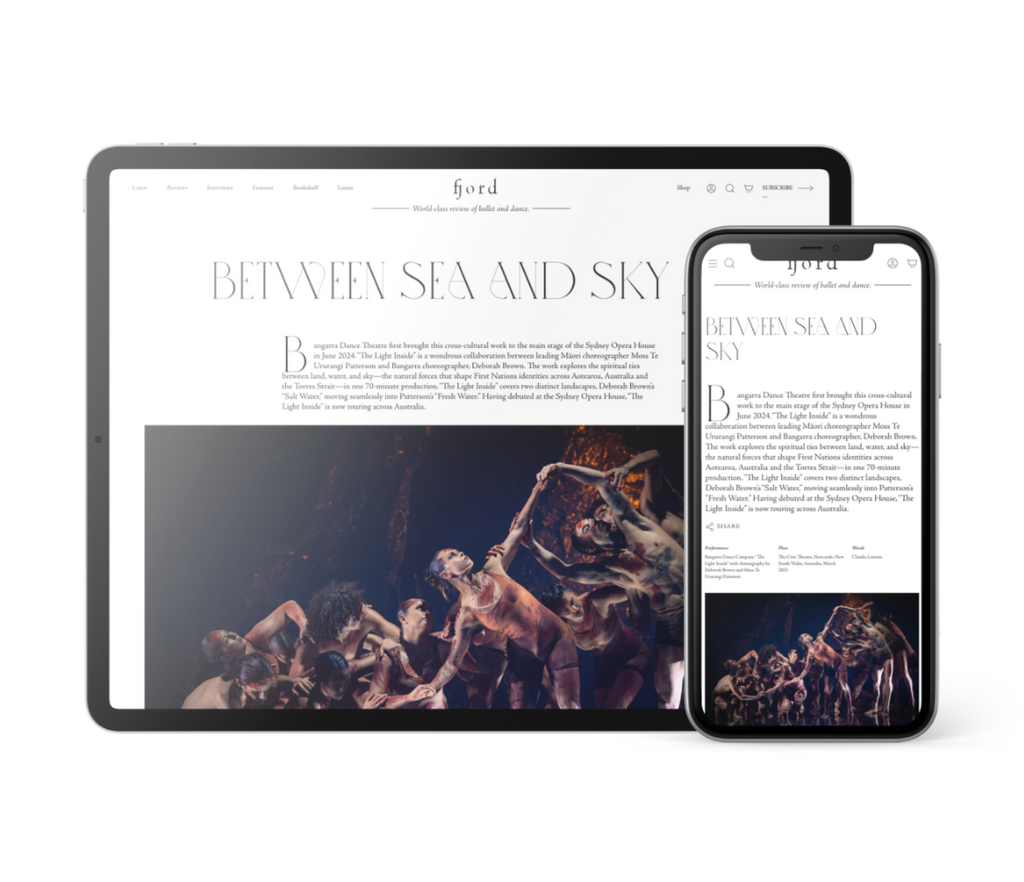Kepekli’s chiaroscuro lighting leads the eye to each area of the stage where the drama next unfolds. On the other side of the platform, in a compositional triangle straight out of a Renaissance masterpiece, sits Mythili Prakash—Gandhari as mother—with her two sons (played by Mavin Khoo and Khan) seated below her. Holding the crown mudra above her head, the mother then places it on each son’s head—almost as a game. Each son instantly feels its magnetizing power; they begin to vie for it. Khan, upon receiving the crown, takes off with a series of animated spins circling the stage—clearly possessed by his desire for it. Venu, all along, sits upstage holding the crown and meditating on it. As Khan completes his whirling frenzy, Venu raises the crown above head worshipping it like a deity.
A captivating moment occurs when Prakash retrieves the crown from her boys and nurtures the shape into a fiery conflagration. Her conjuring fingers, crisp footwork, and expansive force field show her to be the holder, albeit momentary, of the family’s power. But that soon changes as Prakash and Venu are seated side by side on the platform. Prakash enacts receiving a message of her husband’s death in battle culminating in a silent primal cry. Next to her, Venu receives the dead body (Babu) thrust over her lap.
After scenes of public mourning, Prakash lifts the crown from her dead husband’s head and bestows it upon Khoo. Instantly, the tension is palpable. To the sound of a frenetic drum roll on the pot drum, Khan separates himself from the group, his hand shaking uncontrollably. He crawls across the platform to Venu, who is now holding the crown gesture. Striking her with repeated blows, he tries to wrest the prize from her hands. She attempts to jointly form the gesture of fluttering doves instead. Overcome with rage and jealousy, Khan jumps down from the platform, his face and hands consumed by twitches and contortions as he struggles to mold the dove gesture into a crown. His crazed energy propels him into gallops, spins, and rolls across the stage. This, of course, leads to conflict portrayed by the reprised martial sequences from the start.
The drama concludes with Venu center stage enacting the movement motifs from the chapters of her life as the narration repeats: “In another time, I was a daughter, and then a wife, and then a mother…” Opening her arms to reflect the world she has created, she falls to her knees and scribbles on the floor, desperately trying to rewrite the story.
With “Gigenis,” Khan combines his formidable artistry and production capabilities with a team of exceptional co-creators, to forge a collective expression that carries forward the stories, art forms, and wisdom of Indian civilization. In the true spirit of Kathak, a storytelling form, “Gigenis” creates a universe—a mirror to our own condition—that we all might find sartori.











Vivid, persuasive reporting of a complex production. Brava, Karen.